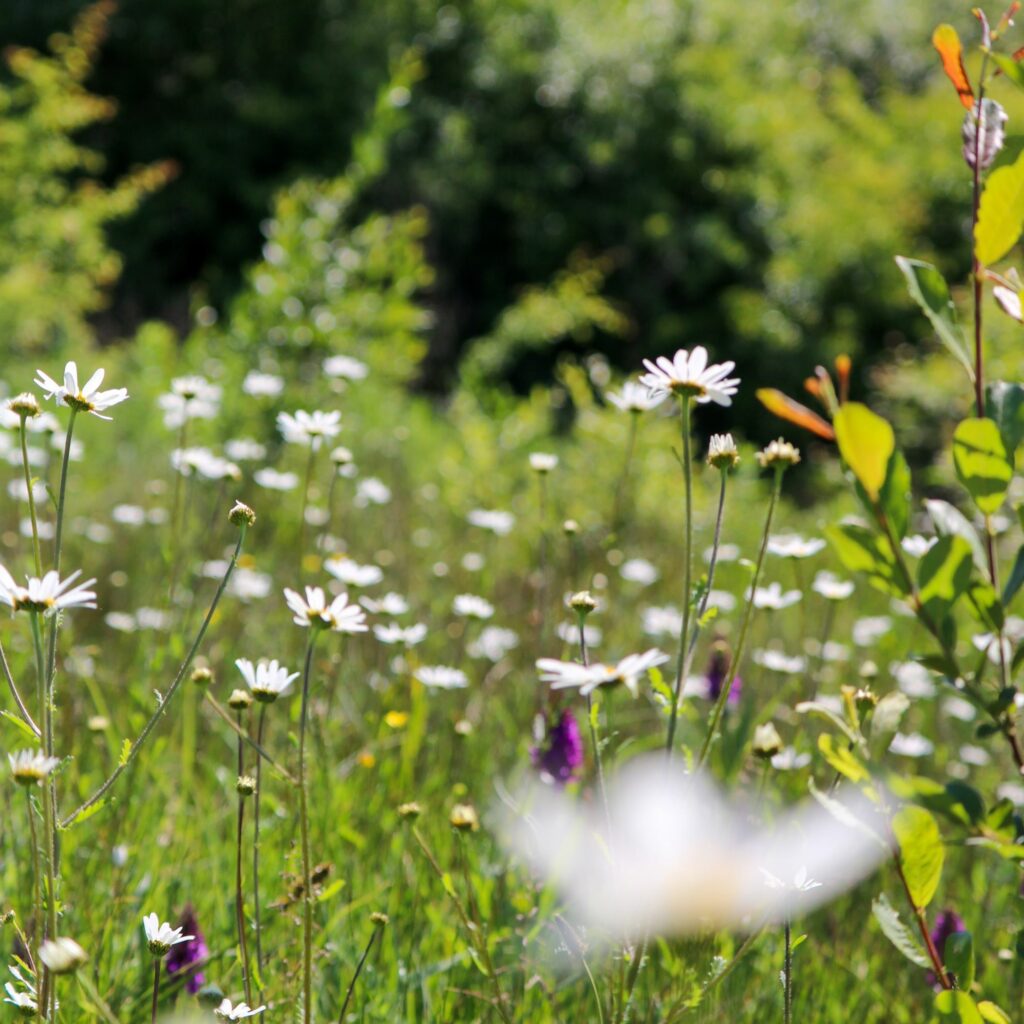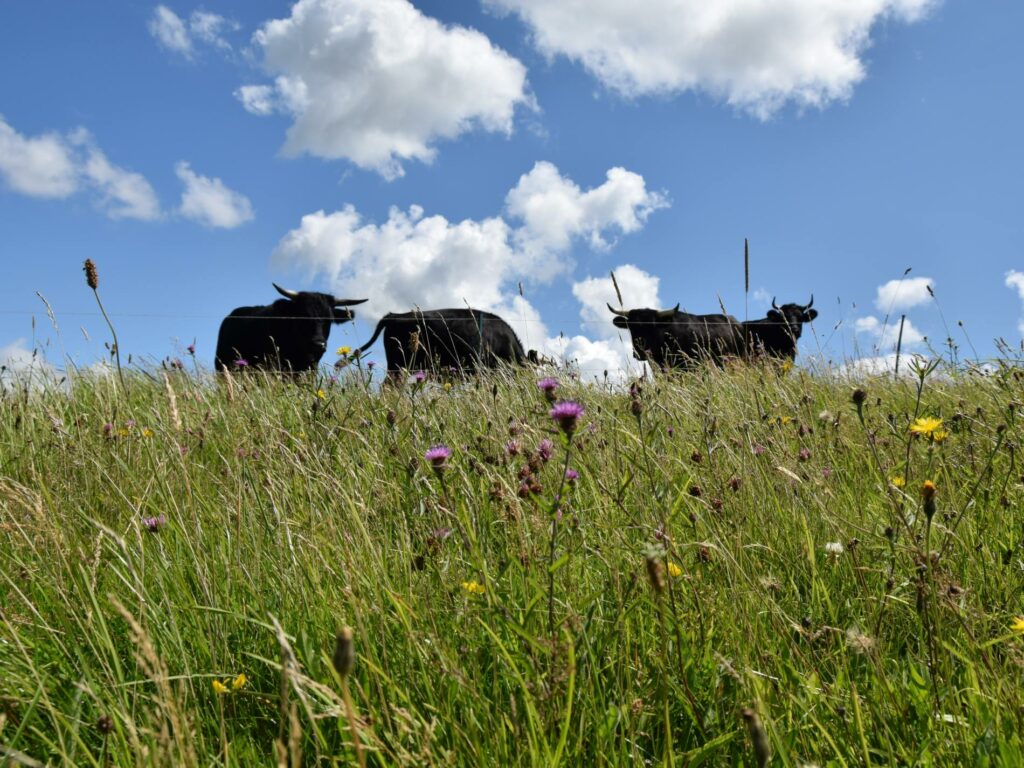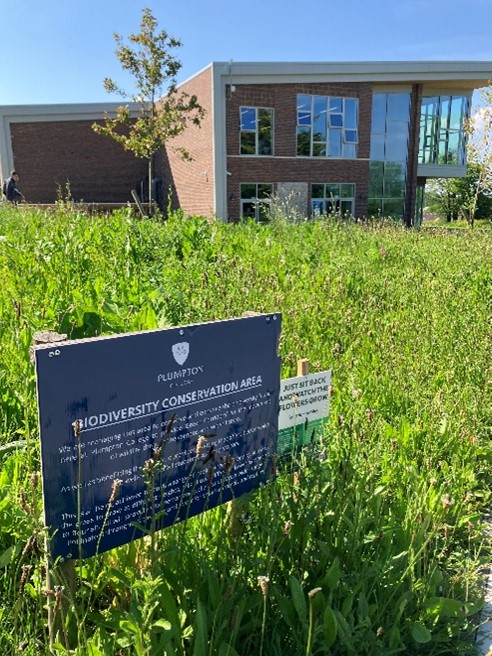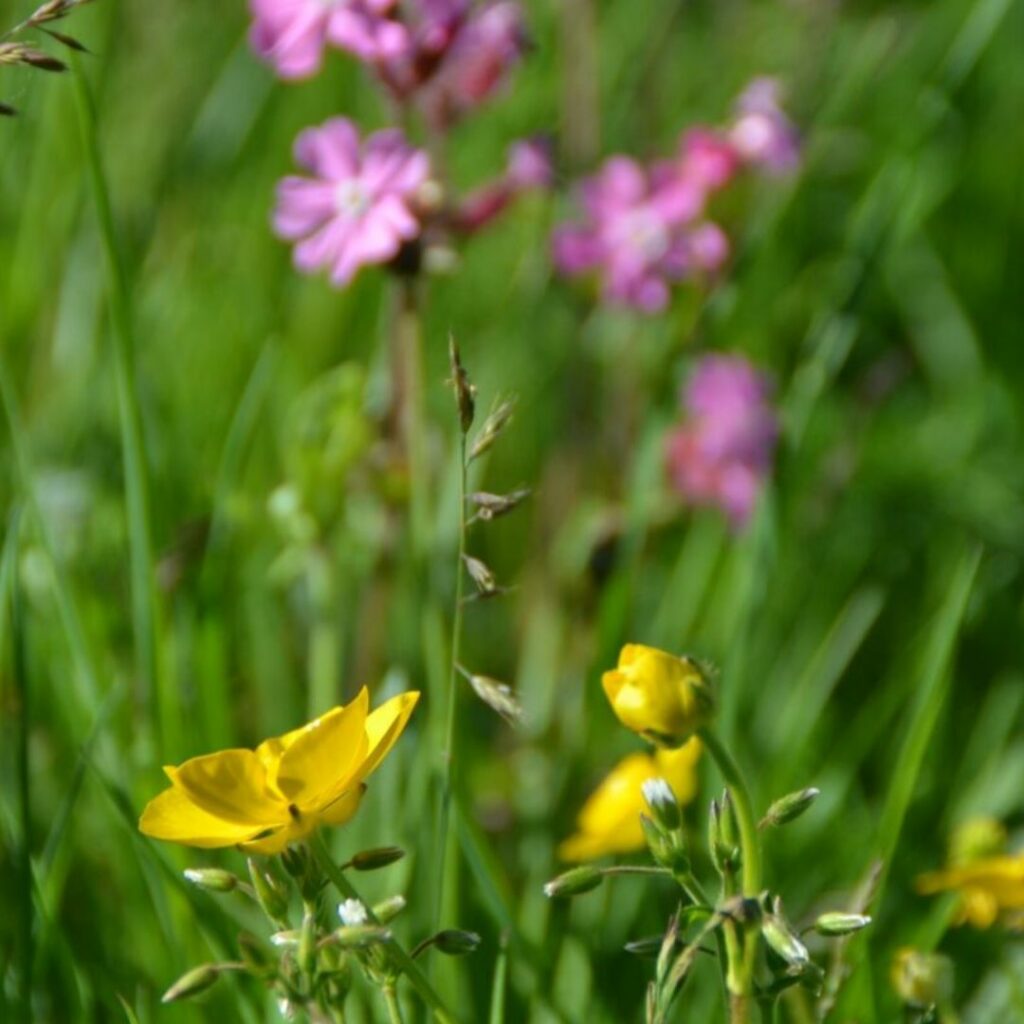
Mark Schofield
Let it Bloom June: What happens after No Mow May?
Congratulations – we’ve reached the end of No Mow May! On behalf of your wildflowers and pollinators, thank you for breaking with convention and for re-imagining your lawns and your local green spaces.
But the buzz doesn’t have to stop there…why not leave a space in your garden for nature to continue to bloom this June? From different grass lengths, how to look out for wildlife and how to mow (if you want to) – follow our expert advice to build on the success of #NoMowMay.
- Go to:
By not mowing in May you have rekindled your wildflowers and thrown a much-needed lifeline to your pollinators. Hopefully you can already see the difference you’ve made and are pleased with the results (we know we are!).
Now the growth season moves into June, things don’t have to get messy or overgrown and you can still maintain a space for your local wildlife. If you’re wondering what to do or concerned about your mower not being able to cope – we have some ideas about how you can build on your success while keeping things under control! But importantly, your lawn or open space is your canvas and you hold the paintbrush.
Different grass lengths
You now have an opportunity to design your wildflower landscape. Grassland wildlife comes in different flavours and you could incorporate these different elements into your plan.
You might need to keep your paths and recreation areas mown short but perhaps you could frame these functional areas with a flowering lawn mown once every 4 to 8 weeks. This allows common, low-growing wild flowers to regrow and reflower throughout the summer while you maintain a shorter, neater height. Picture a carpet of red and white clovers, golden trefoils, puddles of blue selfheal and the white froth of yarrow. You will find that even in the fiercest droughts, the wildflowers will stay green and keep flowering while grasses fall dormant and turn brown.
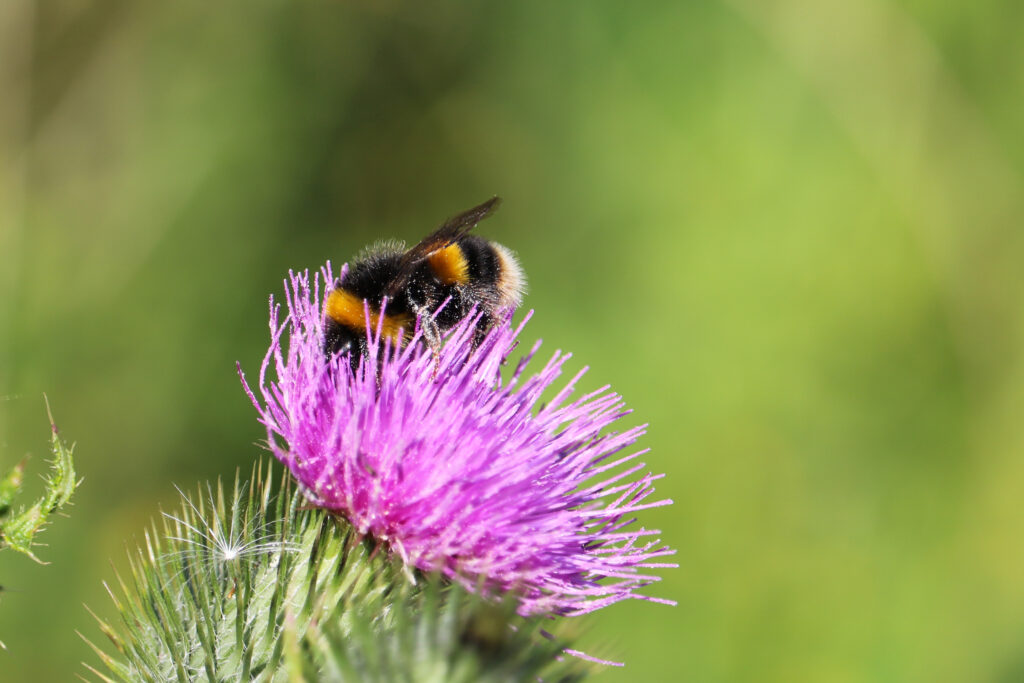
Let it grow…
If you are feeling bolder you might want to trial leaving some of your open space unmown for longer. By mowing only twice a year outside of April to July you could try to recreate the effect of a traditional hay meadow. This allows taller growing flowers such as red campions, purple knapweeds and mauve scabious to grace your space with a more dynamic swirl of colours animated by a summer breeze. You can picture this flavour of grassland as a perennial, herbaceous border you never need to weed feed or water. It holds more value for wildlife because when left undisturbed for longer, wildflowers and grasses can support the lifecycles of those invertebrates that depend upon them.
The more adventurous among you may want to take it to the next stage around the boundary of your plot. Grassland left unmown won’t support so many wildflowers but will provide vital sanctuary for wildlife during hot summers and cold winters. Tussocks of grass and tall herbs will develop, and this structure is a great way to provide another niche for wildlife that complements the more flower-rich areas. Such sanctuary strips need only be a few feet wide at the base of your hedgerow and they only require a minimum of management when you snip out woody saplings or the bramble gets too much. You will be providing vital protection for toads and voles while seedheads will act as natural bird feeders for visiting finches.
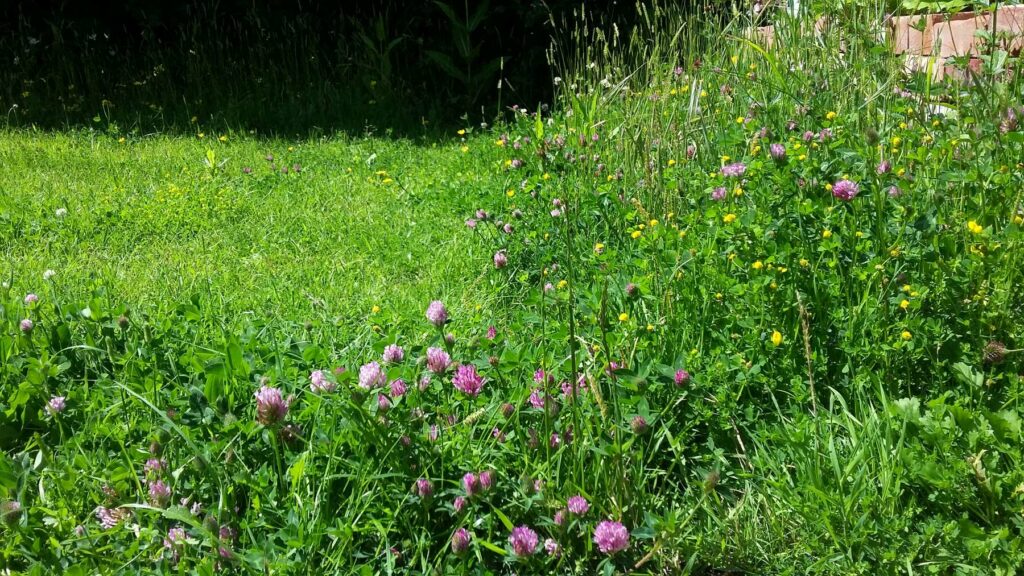
Leaving borders to grow supports a wealth of wildflower and wildlife
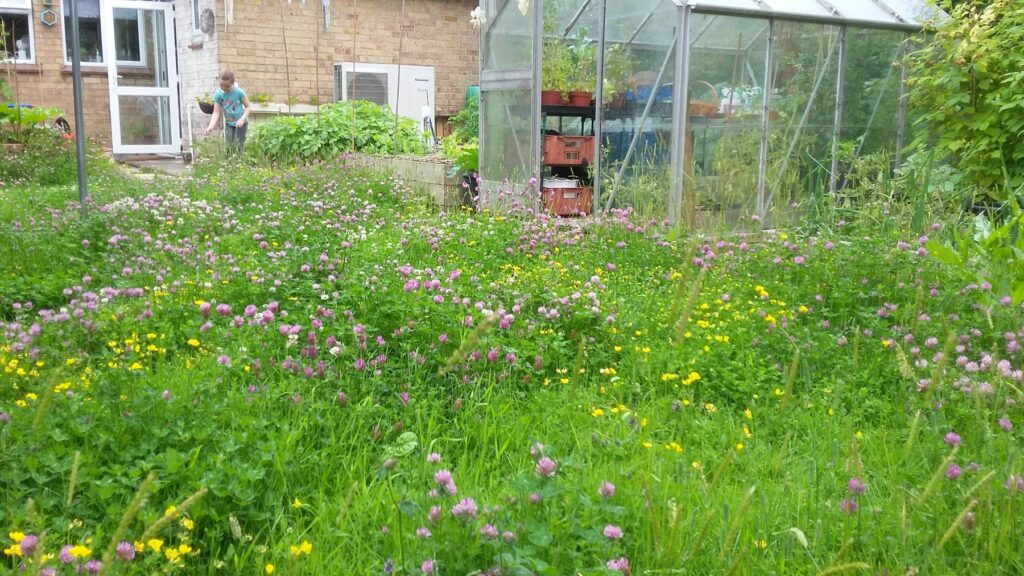
By the end of No Mow May, your garden lawn may also look like this!
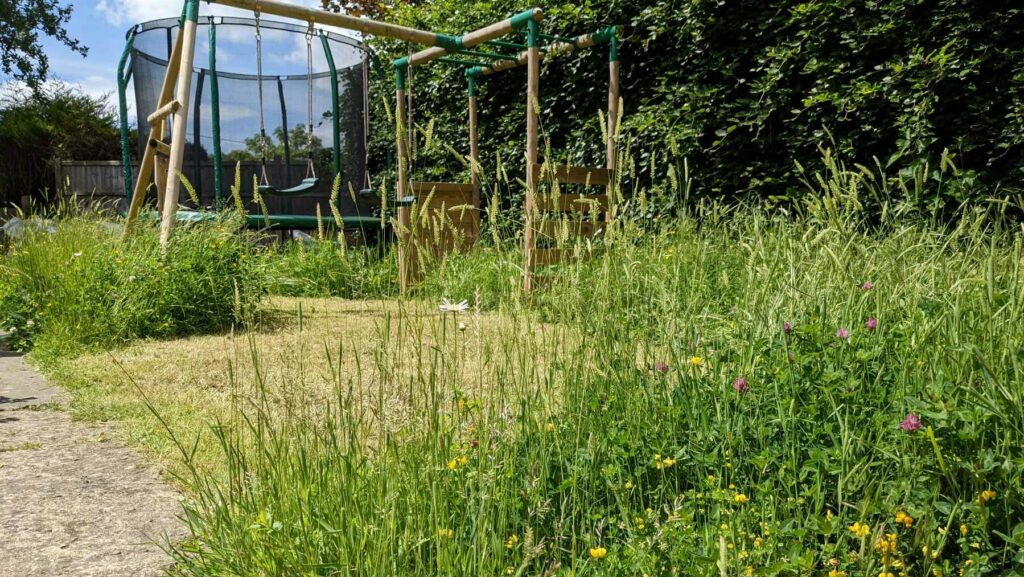
Creating a patchwork of lawn lengths in your garden can support a range of wildflowers
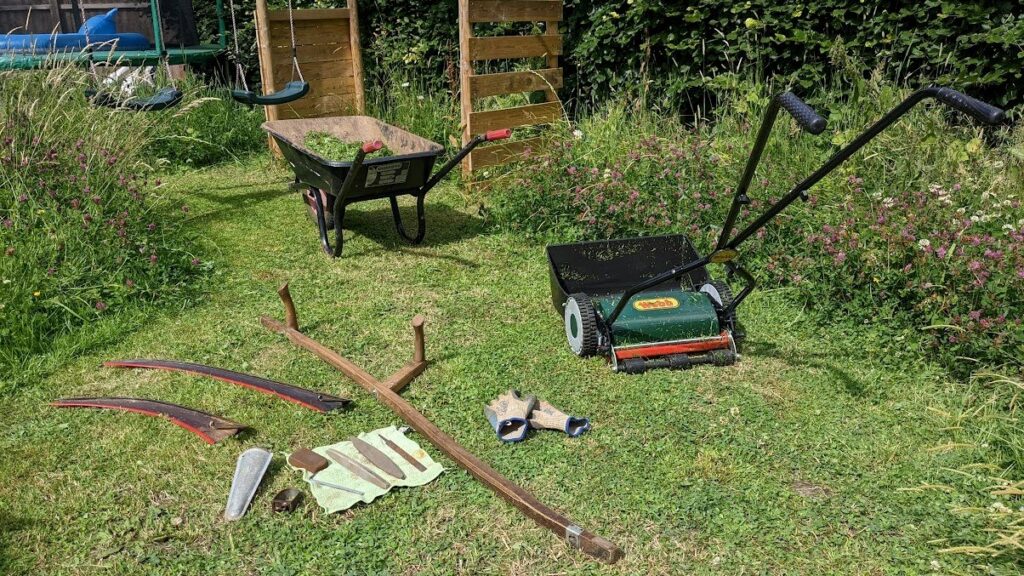
Some of the tools Mark uses in June to manage his lawn
How to mow (if you need to)
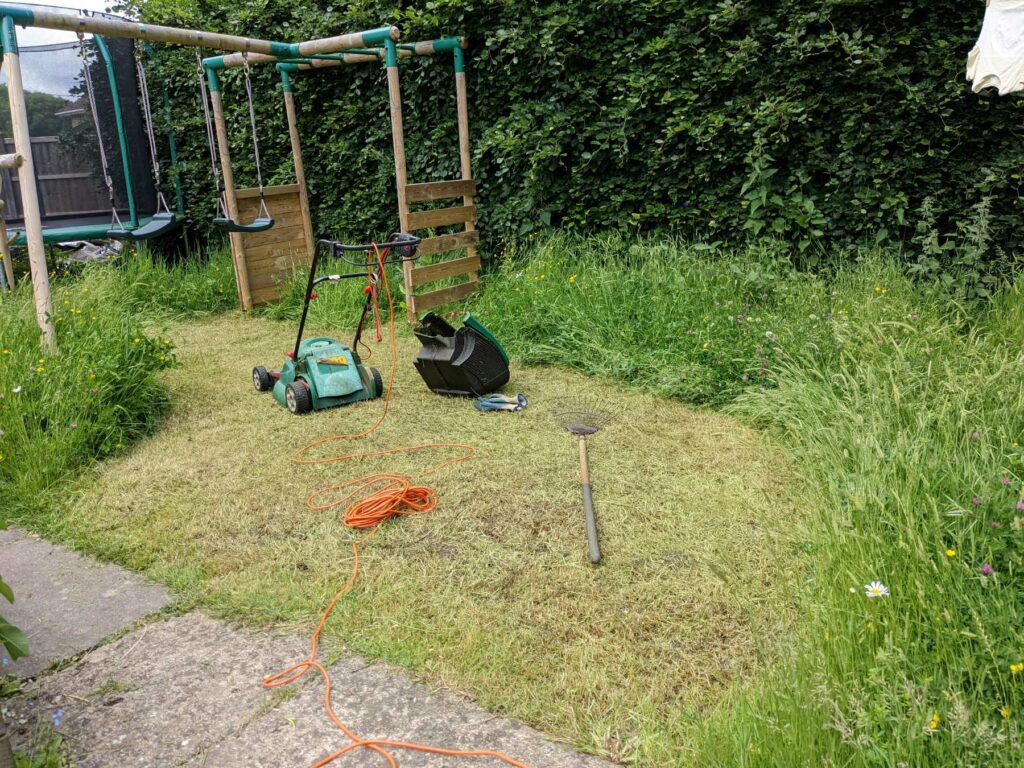
If your grassy growth has gotten away from you, don’t panic. Not all mowers can cope with tall vegetation but most can if you mow in two stages.
Firstly, check your lawn for wildlife – and never mow around the edges towards the centre, this leaves no escape route for wildlife. Instead, as you mow, progress gradually towards sanctuary areas such as uncut grass strips at boundaries.
Next, set the blades as high as possible then mow strips only half as wide as the mower. This will reduce the load on the mower’s engine and make the job easier. You can then re-pass as normal with blades set lower to finish the job. Alternatively, if you have one, a strimmer can be a better way to tackle a taller sward.
Collect or rake your cuttings when you cut
This will prevent the build-up of cuttings which can stifle the regrowth of wildflowers. With no cuttings to rot back down into the soil, it will also help to reduce the fertility of the soil. More fertility gives the advantage to your grass over your flowers. This produces a lush green lawn but it will be much less colourful and much less valuable for wildlife.
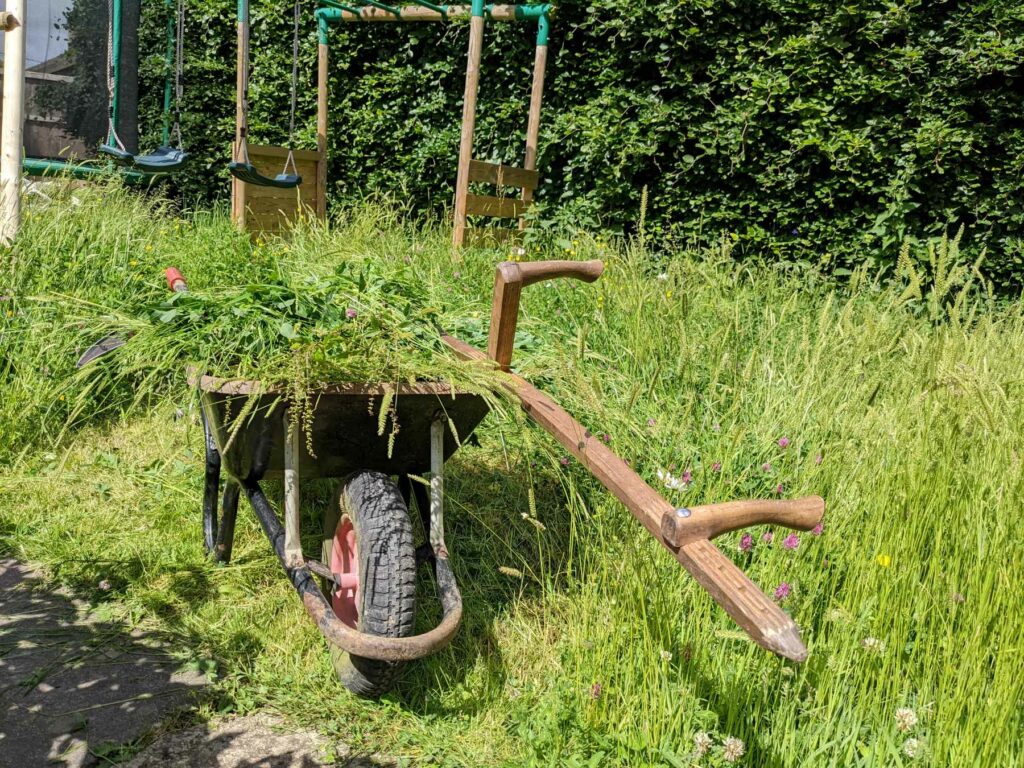
If collecting up or raking off your cuttings seems like more work, remember that you are actually saving effort by managing some zones less frequently. This means that you don’t have to mow everywhere all at once every time. In fact, by removing the cuttings each time you cut, fertility will reduce each year meaning that regrowth will be less and less each year. That means you won’t need to cut so often in the future so you can save yourself the effort, reduce your carbon footprint and enjoy the wildlife! Wilder lawns also capture and lock away more carbon in the soil, so you will be doing your bit for the climate too.
You can use cuttings to mulch your vegetable beds to suppress weeds, retain soil moisture and add fertility where you want it. Composting is also a great way to recycle your cuttings with other organics into soil you can use next season.
Watch out for Wildlife
Some wildlife may have taken refuge in your liberated lawn. Here are some quick tips for keeping wildlife safe while you mow:
- Hand search areas of longer grass for small mammals , like hedgehogs, before you begin the cutting process.
- Work gradually parallel to the shelter the wildlife can move towards, so you are moving closer to the shelter one mower’s width at a time.
- Work from paths and high footfall areas towards the boundaries to allow disturbed wildlife to move towards cover gradually.
- Making a first pass with a high blade setting on your mower will help to flush wildlife before making a lower -repass for a neater finish.
Your choice…
Ultimately, it’s your lawn and your choice – to manage as you wish. You can rekindle wildflowers from those that are already present and the seeds that have remained naturally dormant in the soil. You might also consider introducing some native perennial wildflower seed or native perennial wildflower plants this autumn. We will have more advice on this later in the year.
However you choose to enjoy your new wildlife area, we wish you every success. Now that you have added a little more colour to the world, we hope you are rewarded with the fizz of grasshoppers, the delight of birdsong and a space that dances with butterflies and buzzes with pollinators.

